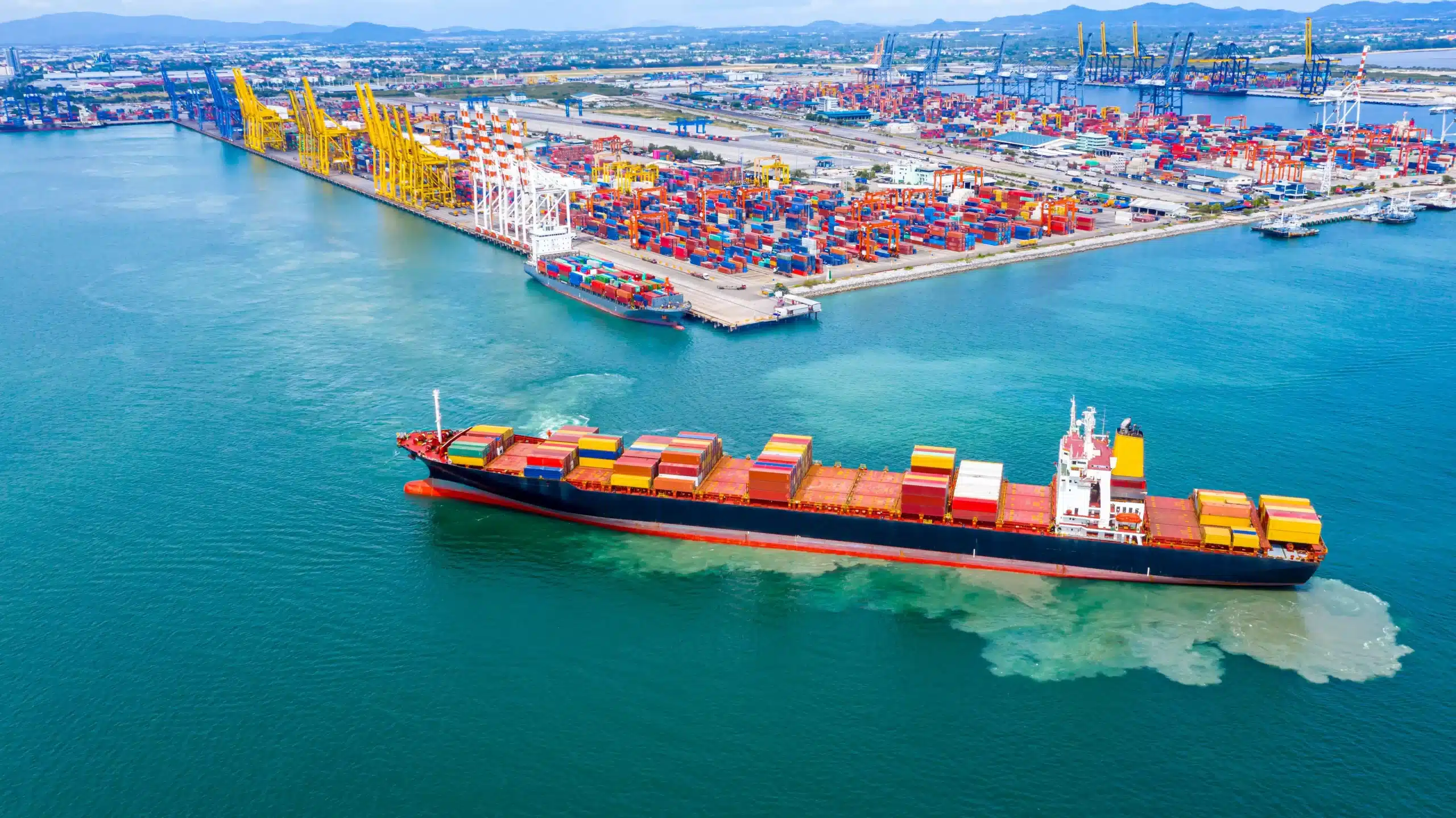Since the beginning of May this year, the ocean freight market has been in turmoil due to a variety of factors that have led to tight capacity and abnormally high freight rates, which can’t help but remind people of the state during the epidemic. Therefore, the peak season of the ocean freight market has arrived early, which surprised NVOCCs.
FuWinn, a supplier of promotional gifts, who is major for different of stainless steel water bottles & backpacks, will take you to unlock the situation of ocean freight in 2024.

When does the peak season of ocean freight usually occur?
In the past, the peak season of ocean freight is usually around August to October. The main reason for the occurrence is that retailers stock up for the holiday season. During this period, freight volumes reach peaks, demand increases but capacity is limited, so freight rates rise and fluctuate.
Why is the peak season of ocean freight coming early?
Although freight rates have been rising since the end of 2023, they have been steadily declining in recent months. However, a large number of factors have led to the early peak season of ocean freight in 2024, involving capacity fluctuations, excess demand on specific trade routes, etc.
What are the reasons for the variety of ocean freight rates in 2024?
The factors that led to the current market situation this year can be roughly divided into the following three points. Vessel utilization in the Asia-Pacific region has reached +100%. Accordingly, peak season surcharges will be collected earlier this year to bring fixed rates closer to the freight-free (FAK) level. As demand far exceeds effective capacity, carriers have begun to prioritize more profitable shipments.
1. Red Sea Capacity Absorption:
Despite the large number of new ships launched, the chaos in the Red Sea continues, absorbing a large amount of global capacity. The ongoing conflict has forced carriers to change routes and abandon the Suez Canal and instead go around the Cape of Good Hope at the southern tip of Africa. This will result in significantly longer transit times for each voyage of ships, reducing capacity in the market.
Overall, the rerouting has led to a 9% year-on-year reduction in global capacity, while the latest Drewry Container Forecaster reported only an 8% increase in new ship capacity, resulting in a continued lack of regional capacity and pressure on overall capacity. Caused a continued lack of regional capacity and put pressure on overall capacity. Learn more about the chaos in the Suez Canal trade route.
2. Abnormal demand:
Demand on the Trans-Pacific Eastbound (TPEB) and Asia-Europe trade routes has far exceeded expectations due to increased demand for e-commerce shipments, inventory replenishment and other factors. The surge in demand caught the entire industry off guard and triggered a battle for available space.
3. Strike threats:
Fears of potential strikes by the International Longshoremen’s Association of North America and Canadian rail workers have led many shippers to speed up freight to avoid disruptions.
Why are so many ocean containers shipped on a roll-on/roll-off basis?
Carriers often overbook ships, with multiple shippers splitting the same cargo with multiple carriers or NVOCCs to ensure that the cargo can be loaded. This may result in last-minute cancellations. Currently, shippers and NVOCCs are continuing to book without booking, leaving them with a large reserve of space. Normally, ro-ro containers are scheduled for sailing, but with freight rates rising rapidly, some containers may be rolled over multiple times based on the freight rates at the time of booking.
How will ocean freight rates rise in the coming months?
Let’s see the ocean freight summery as below.
1. Middle East route:
The Middle East transit ports of Jebel Ali and Dammam still have congestion problems, and some ships have temporarily jumped ports. However, the delay in shipping schedules has led to a dense flow of ships at the beginning and end of the month, and the market is currently in the off-season. The freight rate in August fell slightly on a weekly basis, and the market price fell back to the beginning of the 2-digit.
The market capacity in September is normal, and the shipping companies are still mainly looking for goods. The freight rate at the beginning of the month is expected to continue to decline to around USD 2400/40HC; with the blessing of the Mid-Autumn Festival and National Day holidays, the shipping companies are preparing to stock up, and the freight rate will continue to decline in the middle and late weeks.
2. India-Pakistan route:
The downward trend of the India-Pakistan market in July continued into August, and the freight rate continued to decline by USD50~100/TEU, and the “slashing” and price comparison situation were serious. Many cargo owners followed the BCO big bill special price and asked for a low price.
The delay in shipping schedules has led to a dense schedule from the end of August to the beginning of September, but September is still in the off-season for shipping. In addition, there are new routes with low prices impacting the market. The West Indian freight rate is expected to fall below USD 900/40HC at the beginning of the month, and there may be a small increase in mid-to-late September and then fall back to receive goods during the National Day holiday.
3. North American routes:
The East and West Coast markets in North America are polarized. The freight rates in the East Coast of the United States next door are only high due to the upcoming strike wave; while the West Coast market has been weak in export growth and demand has continued to weaken since July, and the market freight rates in August have also “cooled down” rapidly. In order to slow down the decline in freight rates, shipping companies have raised freight rates, and freight rates have rebounded briefly at the end of the month.
From the perspective of capacity, there is sufficient capacity supply in September, but export demand still lacks an “inflection point”. The temporary increase will not last long, and freight rates in the West Coast market are expected to continue to fall.
4. European routes:
In August, Europe’s overall “supply and demand are unbalanced”, and cargo exports have entered a sluggish period. However, several overtime ships in the middle and late part of the month made up for the vacant capacity caused by the “large-scale” suspension of sailing. “Oversupply” has made it difficult for freight rates to maintain an 8-digit figure. With the help of the “special price” of shipping companies, the price of 40HC this month has generally fallen slowly to the 7-digit figure with a weekly decline of USD 50-100/TEU.
From the ship information collected so far, the overall capacity in September is normal, but the overall market demand is difficult to grow, and the freight rate is also difficult to maintain. Some shipping companies have taken the lead in updating the freight rate that has fallen below 7,000. The price is expected to usher in a big dive at the beginning of the month, reaching the freight rate of USD 6,500/40HC.
5. South America West/Mexico routes:
Overcapacity is the main theme of the South America West/Mexico market in August. Since many shipping companies joined the new track of West South America/Mexico, the freight rates of West South America have plunged for 7 consecutive weeks since July. During this period, many shipping companies offered special prices for receiving goods, and the freight rates fell from USD7000 to the beginning of 3.
But the decline stopped in the last week. The congestion at the Manzanillo Port in Mexico caused the return of the destination port to be delayed. There will be a trend of tight space in the next 2~3 weeks, and the freight rates will rise by about USD 200/TEU at the end of the month.
The problem of shipping delays has begun to emerge. It is expected that the freight rates will continue to rise by about USD 200/TEU in early September-the shipping space is tight due to shipping delays, but considering the upcoming Mid-Autumn Festival and National Day holidays, it is difficult for freight rates to maintain the upward trend in the middle and late part of the month.
So in conclusion, the shipping costs will gradually return to normal starting from Q3.
Now is a good time to place orders and ship goods. Customers who need to place orders should contact FuWinn as soon as possible. Contact us now and you can get a free water bottle sample.





